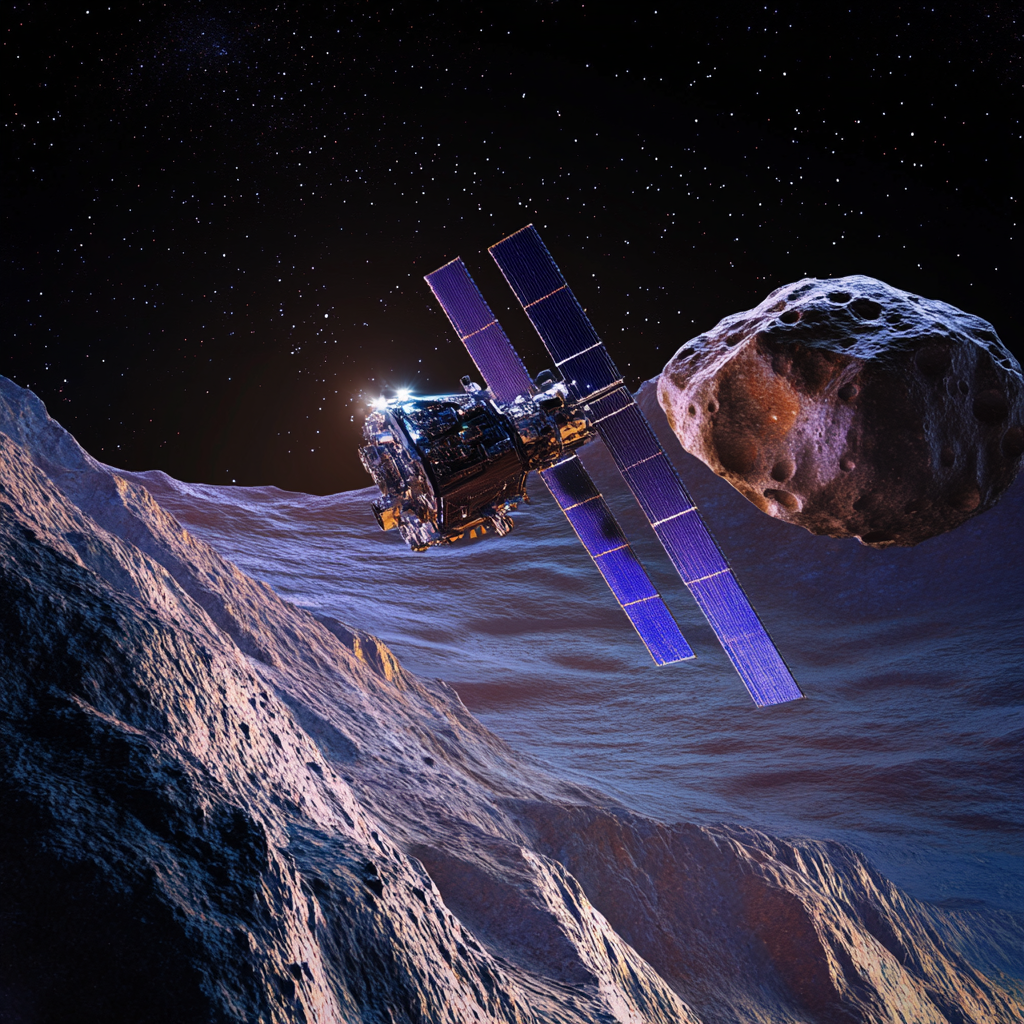
Hera Probe Captures First Views of Earth and Moon En Route to Asteroid Target
Astonishingly, the cosmic stage is once again set in a magnificent performance that holds the entire fate of our blue planet in its hands. Enter the European Space Agency's very own Hera mission — a venture that takes our fascination with planetary defense to new heights as it makes its way to the asteroid system known as Didymos and its companion, Dimorphos. Making its debut on October 7, 2024, the Hera probe just clocked a standout moment, assembling its first mesmerizing images of Earth and its celestial companion, the Moon. Who knew a trip to an asteroid could be so captivating, right?
Now, let’s unriddle what this extraordinary journey is all about. After a flawless launch that even a caffeinated buzz wouldn’t shake off, Hera gingerly awakened its suite of high-tech instruments. This was during the so-called Near-Earth Commissioning Phase, which sounds much like a superhero origin story but is perhaps better defined as the moment our brave little probe began to gather the scientific magic needed for its mission.
Fast forward a tad to October 10 and 11, and boom — Hera asteroids its way back towards Terra, snapping some stunning farewell photographs from a staggering distance of over a million kilometers. Imagine that. One moment you’re preparing to tango with asteroids, and the next, you’re sending cosmic selfies!
Here’s where things get really exciting. The Asteroid Framing Camera (AFC), freshly crafted by German innovators at Jena-Optronik, set the bar high by conjuring a monochrome image of our Earth and the Moon. Captured from approximately 1.6 million kilometers away, this masterpiece showcases Earth bathed in sunlight — and just to sweeten the deal, the Moon twinkles in the frame. It’s like a cosmic postcard, and you’d certainly want to hang it on your fridge.
And that’s not all, folks! The Thermal Infrared Imager (TIRI), custom-designed by the brilliant minds over at the Japan Aerospace Exploration Agency (JAXA), swung into action to deliver another visual treat. From about 1.4 million kilometers, TIRI produced an image highlighting the East Coast of the USA and the Atlantic Ocean, with the Moon shining brightly at the upper right. Not just a pretty face, TIRI will play a key role in measuring temperatures on the asteroid’s surface, helping scientists deduce essential properties like roughness and even the size of individual particles. Essentially, TIRI is the cosmic thermometer we didn’t know we needed!
Next up, we have the HyperScout H, a high-tech gadget from the Netherlands, treating us to false-color imagery from a similar distance. This tool thrives in wavelengths beyond what our eyes can perceive, transforming the view of Earth and the Moon into an elaborate painter’s palette that sparks curiosity about what lies beneath the surface of our upcoming asteroid guests. What kind of minerals are there? And what stories might these celestial bodies tell us about the genesis of our solar system?
But, hold your horses! Let’s dive into the mission’s prime directive. Hera's main goal is to act as the grand detective of the aftermath resulting from NASA’s groundbreaking Double Asteroid Redirection Test (DART) mission. You see, in September 2022, DART decided to literally crash into Dimorphos, changing its orbit around Didymos. Think of it as a cosmic bumper car ride — not the most polite way to say “hello,” but effective! Hera’s role is to examine the impact site, delve into the crater's characteristics, and understand the internal structure of the asteroid like an astrobiologist inspecting a sample under a microscope.
Now, why should you really care? Well, Hera is not just some wild science experiment in a vacuum. This mission is deemed a game-changer when it comes to planetary defense strategies. Get this: understanding the ramifications of DART’s collision provides vital insights into how we might redirect asteroids threatening our planet in the future. Talk about an intergalactic insurance policy!
Moreover, Hera dives into asteroid geophysics — the study of a body’s physical properties — giving us an unprecedented view of an asteroid's internal workings. This kind of intel could teach us how our solar system evolved and, let’s be honest, unravel cosmic puzzles that have been buzzing around for centuries.
Let’s not forget, Hera’s findings will shape the roadmap for designing future asteroid deflection missions. After all, wouldn’t you rather prepare ourselves with knowledge instead of waiting for that proverbial cosmic 2×4 to knock on our door?
As Hera continues its epic voyage destined for Didymos and Dimorphos, we stand witnesses to an incredible leap forward in our planetary safeguarding quest. Those breathtaking images of Earth and the Moon serve as a beautiful reminder of both the enormity of space and our passionate exploration. Think about it: making sense of the universe and ensuring our planet's safety — those are two monumental tasks, and we have the audacity to pursue them!
So, dear cosmic adventurer, if the thrilling exploits of Hera have you buzzing with curiosity and excitement, why not keep your finger on the pulse of all things neural networks, automation, and beyond? All it takes is a tap! Want to stay up to date with the latest news on neural networks and automation? Subscribe to our Telegram channel: @channel_neirotoken
After all, the universe has a way of unfolding stories that are well worth your attention! Keep dreaming, keep exploring, and who knows? Perhaps we’re just a cosmic selfie away from discovering the secrets that bind us all!

